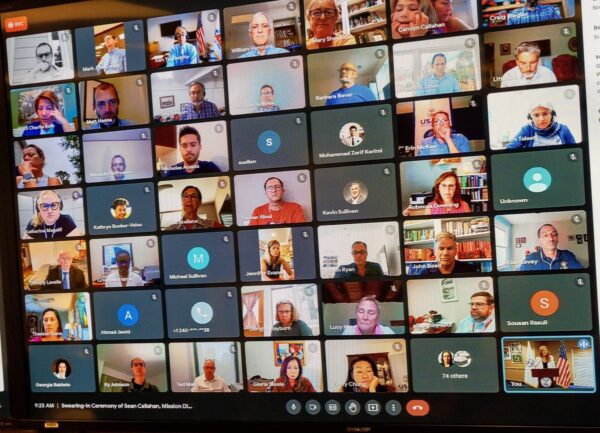Showing collective action across countries and sectors
is essential to Pacific development and winning friends.
Pacific Islands leaders have repeatedly said they want development donors to collaborate more effectively to meet growth and security goals. Given mounting economic and strategic pressures, Western donors are going to have to lift their game and work together more effectively.
The development needs in the Pacific Islands region are huge. It is estimated 25 per cent live in poverty. Financial needs exceed resources, for example $2.8 billion more annually is needed for infrastructure, in addition to $300 million a year more (at least) for climate resilience. With needs so great and donor dollars limited, development cooperation to secure synergies and scale would pay dividends.
To advance development opportunities and fill security gaps, Pacific nations are firm – they will remain “Friends to All”. China will keep pursuing its economic and security interests as recent proposals for port, security and maritime access have shown. If Australia, the United States, Japan and their like-minded partners are going to increase their influence on the Pacific Islands’ decision-making, a change of tack to enhance collaboration is needed.
A promising start was made at the 2018 APEC meeting where Australia, New Zealand, Japan and the United States committed to work together with Papua New Guinea to ensure 70 per cent of its population would have access to electricity by 2030. In part, this was to counter Chinese investment and influence, but it was also a recognition of a pressing need – only about 15 per cent of PNG’s population is connected to the grid, while 60 per cent access off-grid renewable energy with variable reliability. Some argue Western efforts remain “disjointed and economically conservative [and] … give China the upper hand in electricity development processes”. With more concerted effort and better tailoring to place, the outcomes of this consortium’s world-leading expertise could be game changing.
Last year saw the grand announcement of the Partners for the Blue Pacific (PBP), a US initiative that responded to the Pacific’s request for collaboration, but it is seriously short on substance. What the PBP lacks is a flagship initiative – a good start would be to deliver on the APEC promise and then scale up to other countries in need of energy security and connectivity. Other options would be targeted climate finance for the Pacific Islands, a collective program to advance education opportunities, or a coordinated initiative to improve health outcomes including to counter the region’s biggest killer, non-communicable diseases.
Looking ahead, there are a few good starting points that could be enhanced in 2023.
In the middle of the year, Australia will host the Quad (Australia, Japan, India and the United States), which already has an expanded agenda to include development issues of regional concern, for example Humanitarian Assistance and Disaster Relief and the Covid recovery. With Australia as host, it would be fitting and respectful to initiate a “Quad Plus” pre-meeting with the Pacific Islands countries to help shape the agenda in the “family’s” region. Japan could arrange a similar meeting in advance of its hosting of the G7, also taking place in May.

Pacific leaders expect strong engagement with regional institutions and meaningful consultation. Leaders such as Samoan Prime Minister Fiamē Naomi Mata’afa and Pacific Islands Forum Secretary General Henry Puna have been concerned that regional consultations are still coming second to geopolitical posturing. While Western-led initiatives such as the PBP are welcome, leaders feel they still need to demonstrate a shared understanding and respect for Pacific objectives, and a willingness to work with regional institutions. The Pacific Islands countries may have small economies and populations, but their enormous maritime territories encompass global supply chains, valued resources including fisheries, and strategic interests affecting economic prosperity. As noted by PNG’s Prime Minister James Marape, you can’t divorce economy from security.
Development partners with aligned interests in high priority areas such as climate, health, education, or infrastructure need to tap collective expertise. As all donors “step up” and “re-set” in the region following the re-opening of borders, the lack of coordination brings small bureaucracies under immense pressure. At the last Pacific Community (SPC) annual meeting, one small nation with a population of barely 100,000 was feeling the strain of more than 20 technical missions in two months, in addition to multilateral and bilateral “dialogues”.
Ultimately, Pacific regional agencies and national governments need to take a firm lead to bring more cohesion. Both excelled during Covid with the Pacific Humanitarian Pathway initiative that led to better coordinated assistance with strong Pacific leadership. Similarly, as transnational crime escalates, regional bodies are demonstrating that collective action across countries and sectors gets results. The region’s climate diplomacy is also exemplary, but the Pacific is still waiting for stronger collective action in support of the region, and the planet.
For Western donors hoping to win hearts and minds, as well as demonstrate the value of democracies and a “rules-based order”, there needs to be a stronger display to show the whole is greater than the sum of its parts, and the “development partner” parts can work well together.
With more concerted effort and better tailoring to place, the outcomes of this consortium’s world-leading expertise could be game changing.


